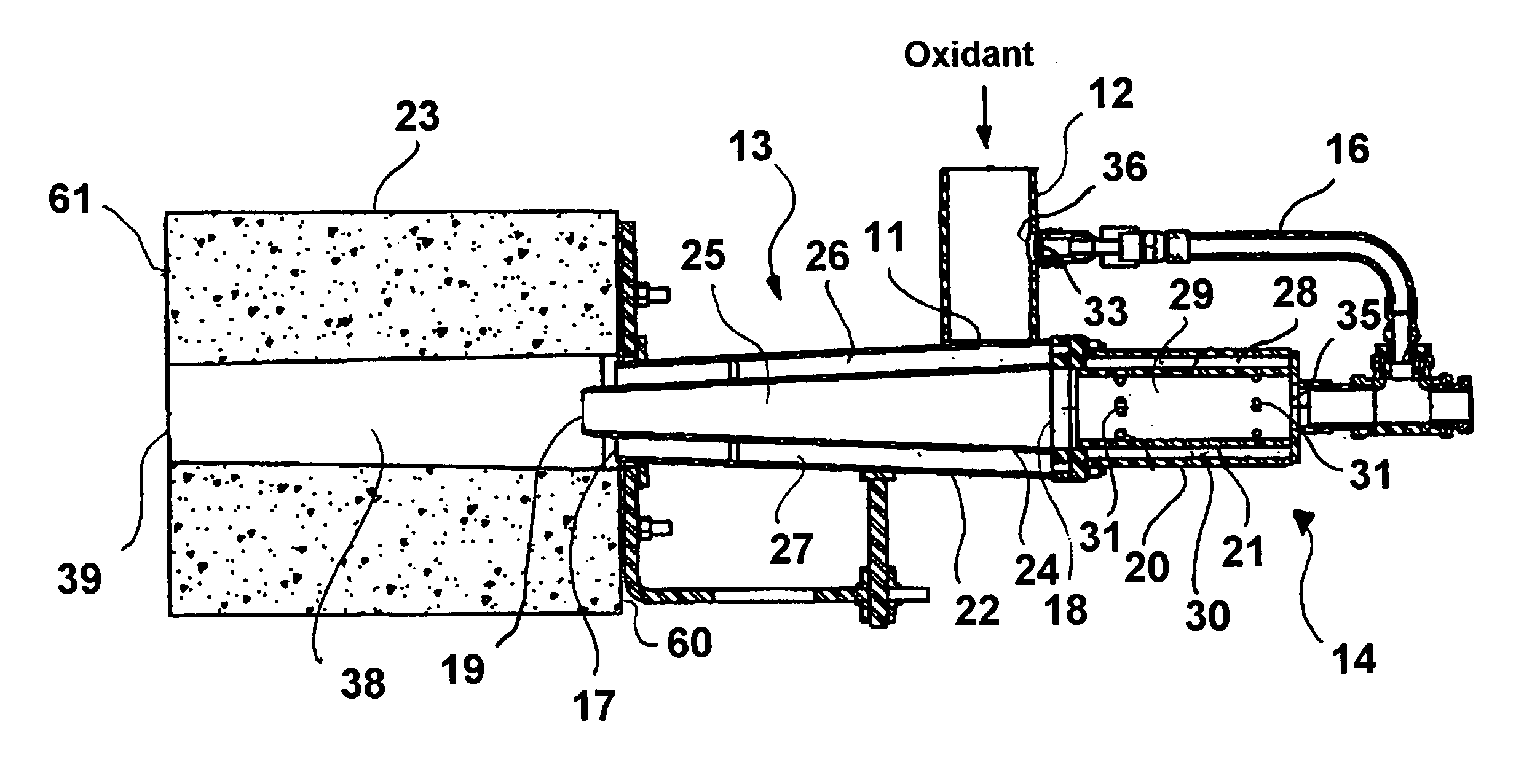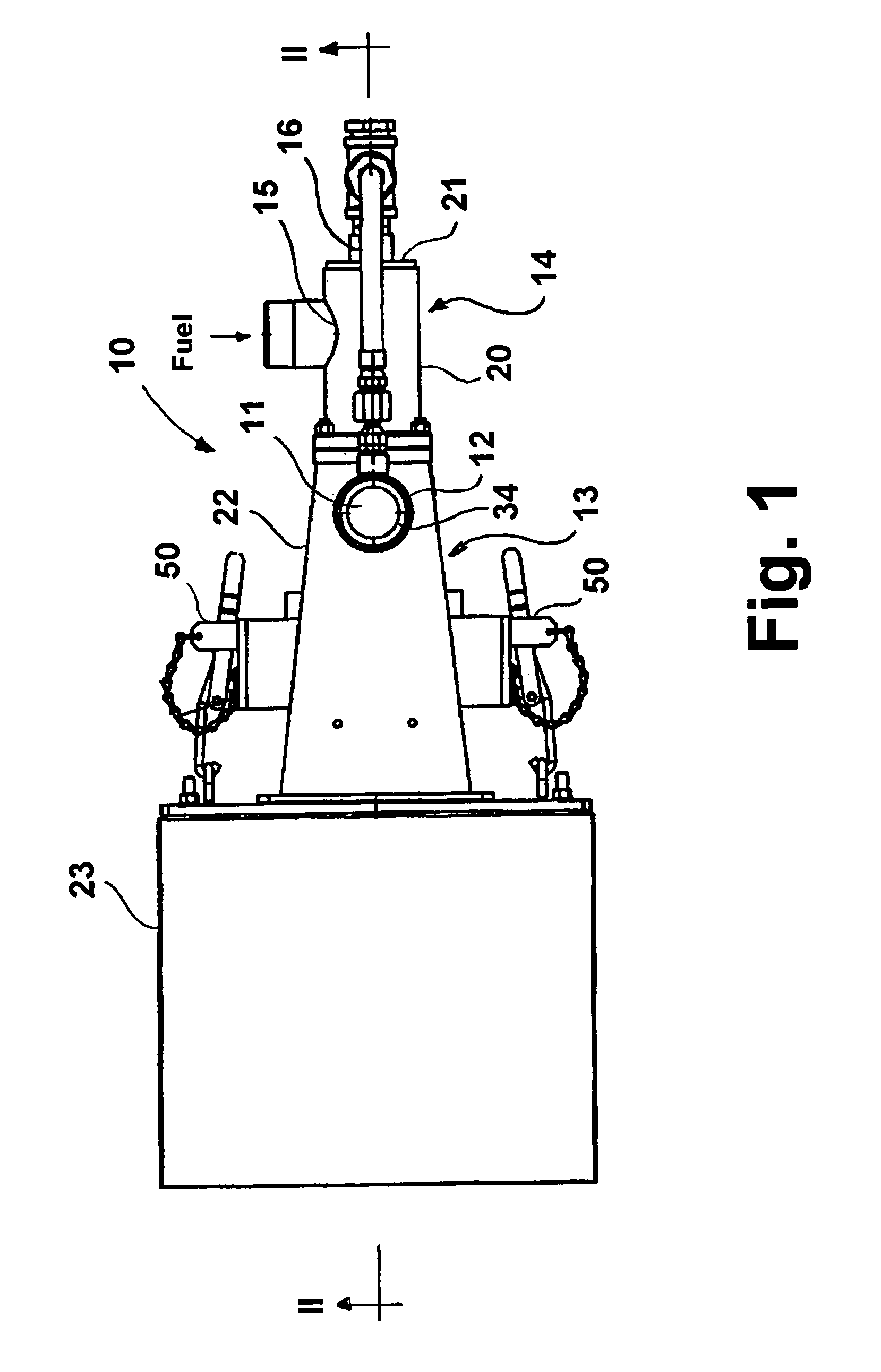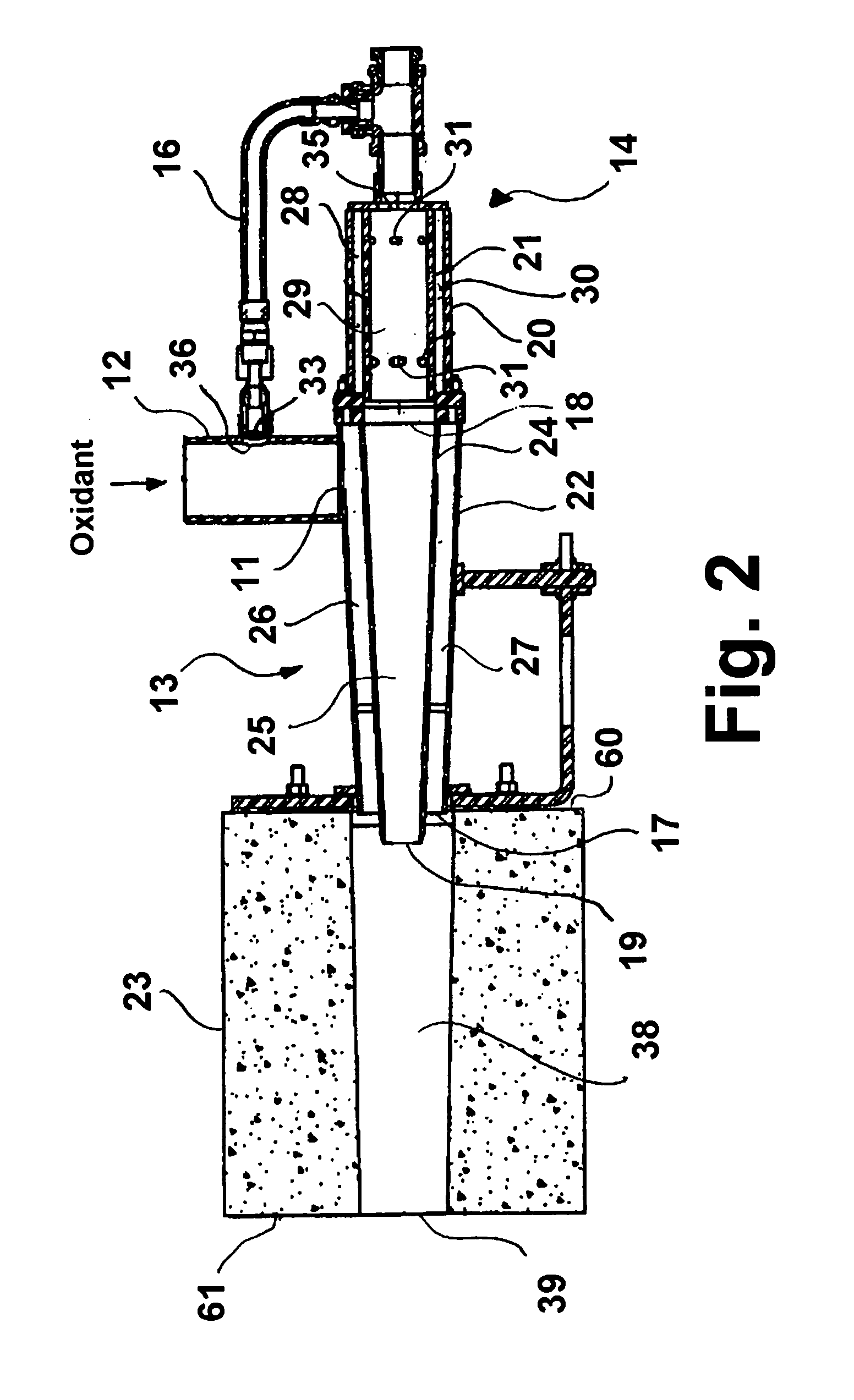High-heat transfer low-NOx combustion system
a combustion system and high heat transfer technology, applied in combustion types, combustion of lump and pulverulent fuel, lighting and heating apparatus, etc., can solve the problems of uncontrolled increasing raw material volatilization and uncontrollable emissions of nitrogen oxides, sulfur oxides and process particulates, etc., to avoid the generation of hot spots, reduce nox emissions, and uniform heat distribution
- Summary
- Abstract
- Description
- Claims
- Application Information
AI Technical Summary
Benefits of technology
Problems solved by technology
Method used
Image
Examples
Embodiment Construction
[0020]Referring to FIGS. 1 and 2, the combustion system 10 of this invention comprises three basic components or stages—primary combustion stage 13, pre-combustor stage 14 disposed upstream of primary combustion stage 13 and burner or refractory block 23 disposed downstream of primary combustion stage 13. As used herein, the terms upstream and downstream apply generally to the direction of flow of fuel and oxidant through the system, which in FIGS. 1 and 2 is from right to left.
[0021]Primary combustion stage 13 comprises at least one outer wall 22 forming an oxidant chamber 26 having a primary oxidant inlet 11 connected to an oxidant supply conduit 12 and having a primary oxidant outlet 17. Disposed within the oxidant chamber 26 is at least one inner wall 24 forming a fuel chamber 25 having a primary fuel inlet 18, a primary fuel outlet 19 oriented in the direction of the primary oxidant outlet 17 and forming a primary annular space 27 between the at least one outer wall 22 and the ...
PUM
 Login to View More
Login to View More Abstract
Description
Claims
Application Information
 Login to View More
Login to View More - R&D
- Intellectual Property
- Life Sciences
- Materials
- Tech Scout
- Unparalleled Data Quality
- Higher Quality Content
- 60% Fewer Hallucinations
Browse by: Latest US Patents, China's latest patents, Technical Efficacy Thesaurus, Application Domain, Technology Topic, Popular Technical Reports.
© 2025 PatSnap. All rights reserved.Legal|Privacy policy|Modern Slavery Act Transparency Statement|Sitemap|About US| Contact US: help@patsnap.com



